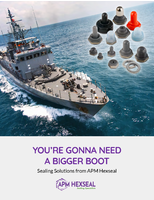Remote Sensing Ice Detector Probe Weighs Only ¼ Ounce.
o No moving parts
o Radio silent; no MHz clock
o Reference circuit provided
o Hermetically sealed
o Ice sensitivity = 0.001 inch
o NASA calibrated
o Embeds icing detection for host aerospace systems
o SAE standard AS-5498 5.2.1.1.1
Ft Lauderdale FL, August 1, 2005 -- New Avionics Corporation here announces the availability of a new, value-enhancing embedded ice detection transducer probe for use across a very wide range of aerospace systems. New Model 9732 - OEM transducer probe detects ice with a sensitivity of 0.001 inch, and alerts pilots to the presence of ice aloft before it can become any kind of a hazard to aircraft in flight.
Remote sensing is accomplished by separating the tiny transducer probe from its electronic circuitry by as much as a meter. Only four wires connect the transducer probe to
its operating circuit, which is radio silent and uses no MHz clock. It runs on 3.3 VDC and consumes less than 100 mA. A reference circuit is supplied under license, along with board layout, low cost bill of materials, and ASIC fuse map.
By automating the pilots' task of "looking for ice", Model 9732 ice detecting transducer probe provides a meaningful, low cost standard for "known" icing conditions.
New Model 9732 ice detection technology allows makers of autopilots to alert the customer pilot to the presence of ice and the need to disengage the autopilot before ice begins to affect flying characteristics of the aircraft. Makers of Unmanned Aerial Vehicles can incorporate onboard ice detection with little power or weight penalty, and great latitude in weight distribution. Makers of anti-icing systems can alert the customer pilot to activate anti-icing measures at the moment of optimum efficiency.
Operators of turbofan jet engines can save fuel and reduce engine damage by activating engine anti-ice measures at the moment of optimum efficiency. Makers of flight data recorders can add value with icing profile channels. Makers of in-flight weather systems can create and distribute maps of icing domains in real time. Makers of antennas can add value by embedding low cost ice detection, as can makers of altimeters, Pitot tubes, stall warning indicators, and outside air temperature gauges all add value by embedding ice detction features.
As a demonstration of how the new technology can be applied to host products, New Avionics has developed a unique ice-indicating outside air temperature gauge that is a form, fit, function replacement for factory OAT gauges of the bi-metallic type, per FAA TSO C43c. It is designed to install on virtually any kind of air vehicle, from balloons to cruise missiles.
Because it contains no moving parts, the new ice transducer probe is made to be completely solid, and robust to + 25 G in all six axes. It is fabricated of type 316L marine grade stainless steel, hermetically sealed, and operates at any practical altitude.
NASA has tested and calibrated the Model 9732 ice detecting probe, and DVD "footage" is available from NAC that documents the probe's correct operation within seconds of entering various icing domains aloft. NASA test parameters correlate to SAE aerospace specification AS-5498 paragraph 5.2.1.1.1, and include air temperatures from 40 deg F to 14 deg F; air speeds from 100 mph to 250 mph, and liquid water contents from 1.8 grams/cubic meter (dense cloud) to 0.2 grams/cubic meter (thin wispy cloud). Contact New Avionics for a free copy of the NASA test report and DVD.




